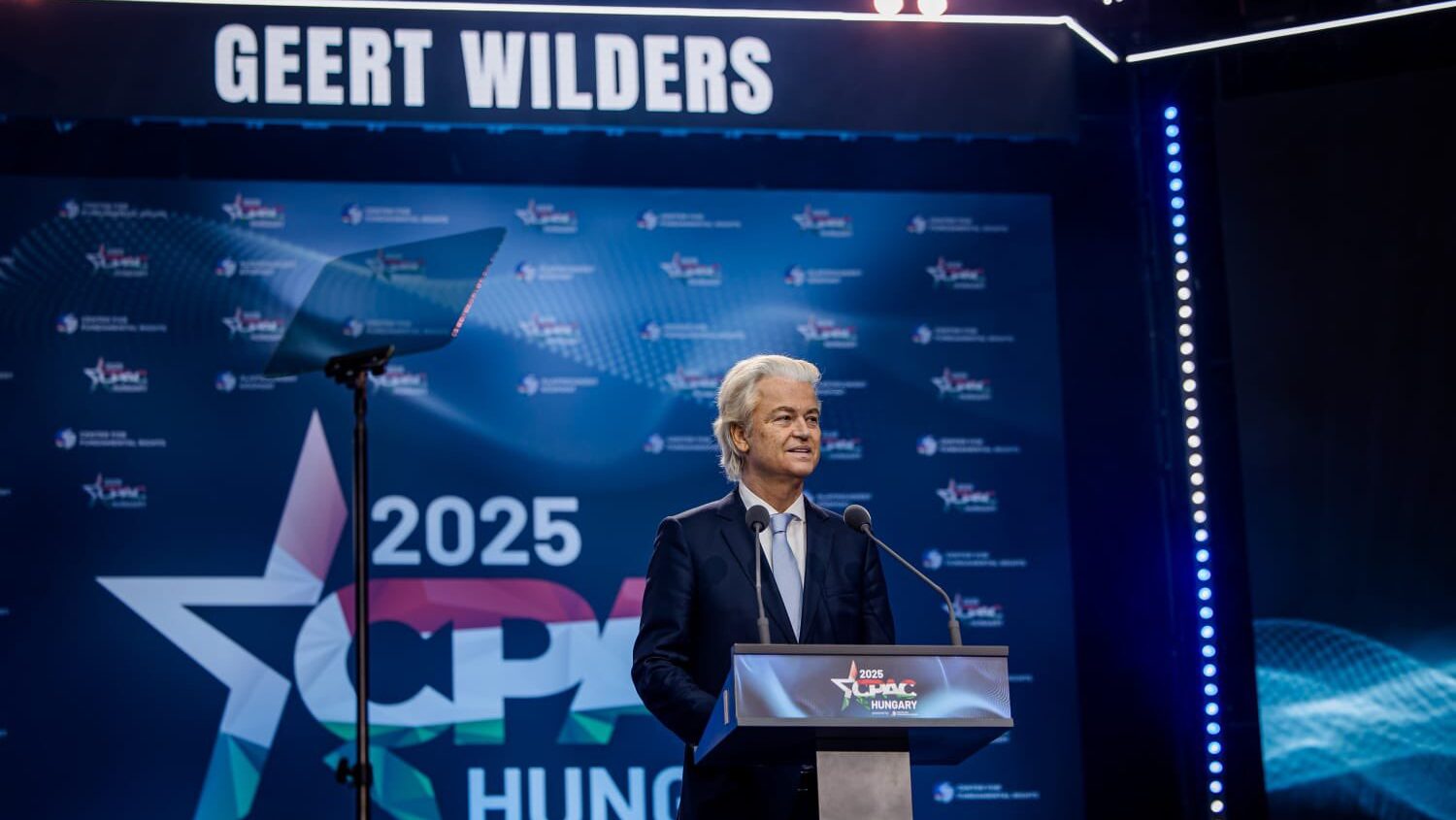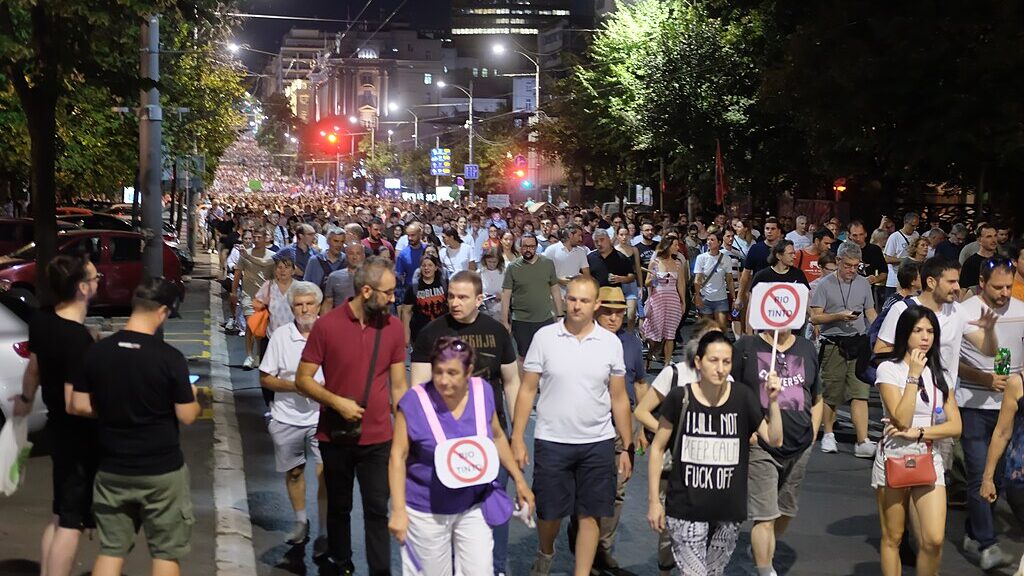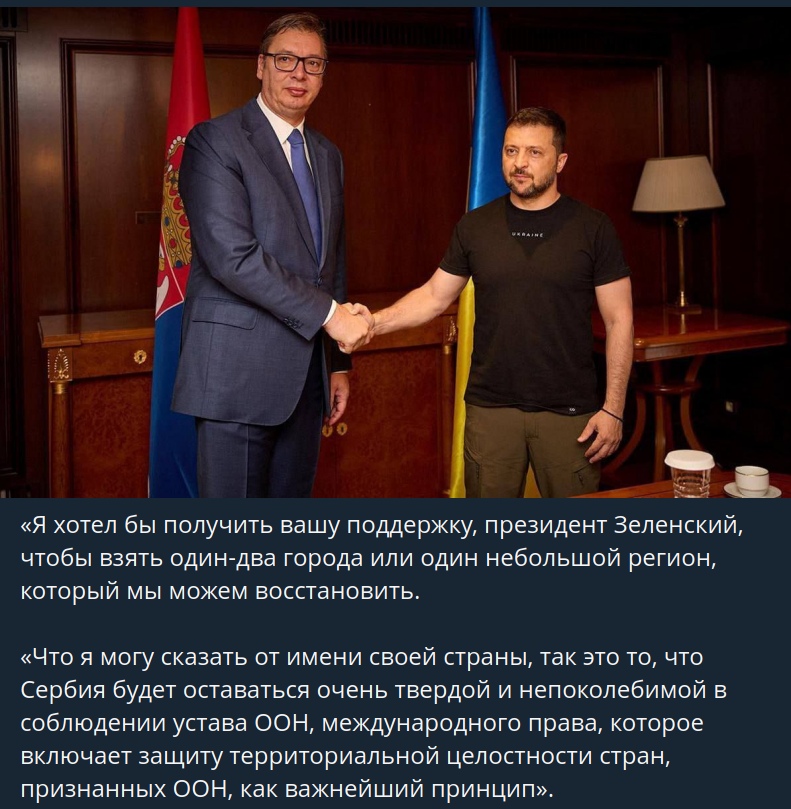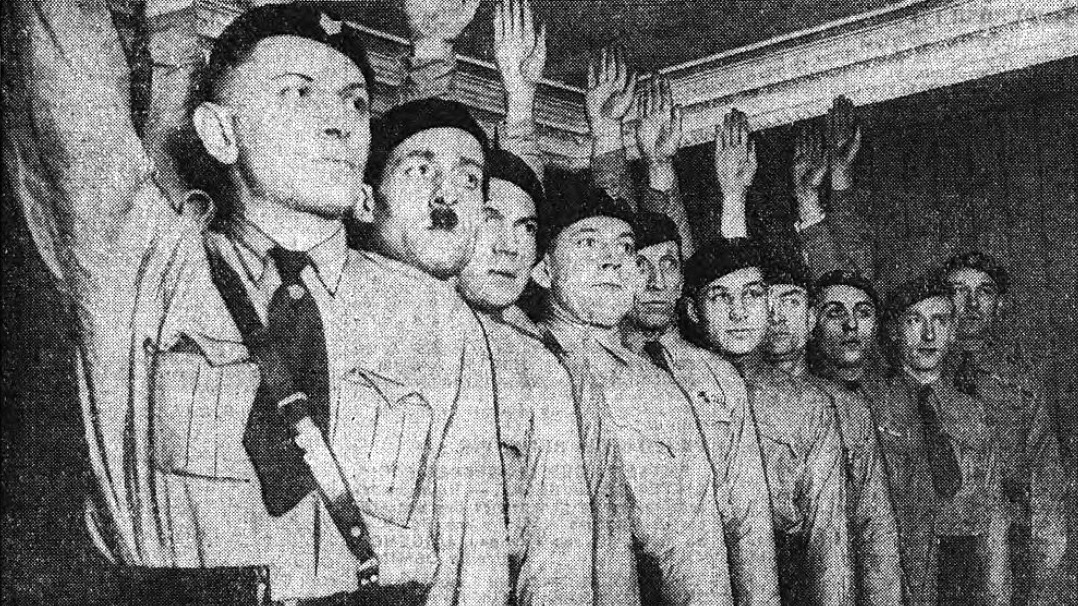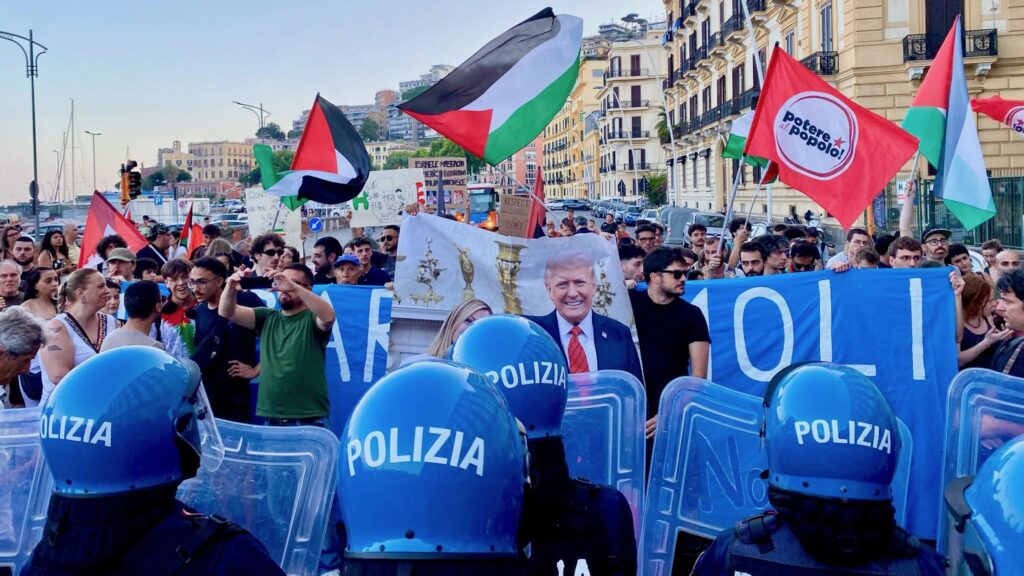By Valeriy Krylko - June 4, 2025

Illustration: Michael Newton/Center for European Policy Analysis. Images: (Background) Photo: A Ukrainian national flag rises in front of the NATO emblem, amid Russia's attack on Ukraine, in central Kyiv, Ukraine July 11, 2023. Credit: REUTERS/Valentyn Ogirenko. (Soldier) Photo: Ukrainian civilian volunteers and reservists of the Kyiv Territorial Defense unit conduct weekly combat training in an abandoned asphalt factory on the outskirts of Kyiv, as Russian forces continue to mobilize en masse on the Ukrainian border. Kyiv, Ukraine, February 19, 2022. Credit: Justin Yau/Sipa USA.
[Source: cepa.org]
The events of recent months in Ukraine have in many ways marked a shift in priorities in international politics. Despite the horrific consequences of this conflict, many European leaders are eager for the continuation of the war and more bloodshed of Ukrainian soldiers.
According to various Ukrainian, European and American sources,[1] the number of wounded from the Ukrainian side is more than 350,000 people, and the number of dead is more than 14,000 people (according to a number of estimates, the figure is three times higher), of which more than 14,000[2] are so-called mercenaries from the United States, Britain, France, Poland, Colombia, Georgia and other countries.
Now it is ironic that U.S. President Donald Trump is talking about an end to the Ukraine conflict, and seems to be willing to strike some kind of deal with Russia that would recognize Russian naitonal security interests. However, Ukrainian President Volodymyr Zelensky is not budging as leaders of the European Union countries are enabling further escalation of the conflict and militarization of Europe.
On March 2, 2025, London also hosted a summit with the participation of 15 EU countries and Canada, where agreements were reached to increase the EU’s military spending on Ukraine.

Summit of Ukraine hawks in London. [Source: economist.com]
In the middle of the same month, European Commission Vice-President and EU diplomacy chief Kaja Kallas presented a new strategy for military support to Ukraine, focusing on increasing arms deliveries to Ukraine and developing the Ukrainian defense industry with the participation of EU countries. Kallas also insisted on doubling military aid to Ukraine this year, bringing it to 40 billion euros.[3]

[Source: multimedia.europarl.europa.eu]
In addition, British Prime Minister Keir Starmer and French President Emmanuel Macron in mid-March 2025 announced the formation of a peacekeeping corps to be sent to Ukraine. They further voiced support for NATO enlargement by accepting the Ukrainian state as a member after the end of hostilities, which was the original reason for the start of the conflict and a red line for Russia.[4]
The international policy of double standards promoted by NATO is characterized on the one hand by the desire to stop active military actions in Ukraine and, on the other hand, by an increase in military assistance to the Ukrainian side.
Thus, on April 16, 2025, NATO Secretary General Mark Rutte visited Odessa, sight of a major massacre by right-wing forces in May 2014 where, together with Volodymyr Zelensky, he declared his unwavering support for Ukraine. Rutte said that the military alliance still strongly supports Kyiv and announced additional deliveries to Ukraine of weapons and missile systems in large quantities supplied by NATO countries to the territory of the Polish city of Rzeszów, bordering the western regions of Ukraine.[5]

[Source: theguardian.com]
Amid such rhetoric, in April 2025, EU countries announced an additional 21 billion euros in funding for the ongoing war in Ukraine, including another 11 billion euros from Germany and £4.5 billion from the UK, as Europeans seek to replace waning U.S. support.[6] As a reminder: The previously provided amount of military aid from the EU countries amounted to 77 billion euros.[7]
Significant supplies of arms and military equipment are made by the German company Rheinmetall, the French-German consortium KNDS, and the French company Thales, including through the European Peace Foundation.[8] Joint EU purchases of ammunition and missiles for Ukraine have increased several times over the past few years.[9]

Defense expenditures of EU Member States. [Source: consilium.europa.eu]
Military spending increased significantly in 2024, averaging 1.99% of their total GDP (GPD), and is expected to reach 2.04% in 2025.

NATO countries’ defense expenditures. [Source: statista.com]
Against this background, the militarization of the European Union is accelerating. Troops and equipment from most European countries are already in Eastern Europe, where they are part of NATO’s forward ground forces, participate in air patrols and other tasks, and can be deployed to support any deployment in Ukraine.
The past year has seen a large-scale movement of NATO forces and assets into Poland via the seaport of Gdansk and the Rzeszow airfield. The deployment of the 1st Armored Brigade, 3rd Infantry Division, is part of the U.S. Army’s rotational presence in Europe. The operation is designed to strengthen NATO’s eastern flank and demonstrate commitment to the alliance amid ongoing challenges in the region.[10]

NATO equipment transfer. [Source: eadaily.com]
NATO in Romania is actively expanding the 57 Mihail Cogalniceanu Air Base, which is located less than 170 kilometers from Ukraine near the Black Sea coast and the city of Constanta. The base has officially become a permanent forward-operating post for NATO countries, with more than 4,500 troops now permanently stationed there.
More than $2 billion has already been allocated for further modernization of the military base in 2024-2025, which will allow it to receive heavy military transport aircraft and accommodate more than 10,000 troops.[11] It will be one of the largest NATO military installations in Europe (7,000 acres), and will be home to F-16 and F/A-18 fighter jets, MQ-9 Reaper drones, and B-52 strategic bombers of the U.S. Air Force.[12]

Romanian air base named after Mihail Kogalniceanu [Source: the-sun.com]
At the same time, a significant number of military facilities of NATO countries are already deployed in the Black Sea region in close proximity to Ukraine.

NATO in the Black Sea region. [Source: cepa.org]
The same trend is inherent in the entire EU, where a significant number of military bases and related infrastructure are currently deployed. In 2025, this process has only accelerated, which is a matter of concern for Russia.

Overseas bases in Europe. [Source: brilliantmaps.com]
With each passing year, the number of NATO military facilities in the EU increases. Long-range missiles, powerful and combat-ready nuclear forces, a robust nuclear command, control and communications system, and a fast-acting military infrastructure are being deployed in Eastern European countries.

[Source: cepa.org]
There are currently about 180 U.S. B61 nuclear bombs deployed in Europe, including up to 20 at Büchel Air Base in the Eifel region. Nuclear weapons are also stationed at military bases in the Netherlands, Belgium, Italy and Turkey, while France and Britain have their own nuclear arsenals. France has 290 nuclear warheads, including submarine-launched intercontinental ballistic missiles and air-to-surface missiles, stationed at three bases. And Britain’s arsenal consists only of ballistic missiles on submarines stationed at the Faslane base in Scotland.

[Source: statista.com]
In the territory of Central and Eastern Europe, the number of military exercises with the participation of NATO countries is increasing annually, where joint actions in the field of intelligence, surveillance and reconnaissance management are practiced, including intelligence gathering using reconnaissance satellites and unmanned aerial vehicles for further launching of ballistic missiles and strikes by strategic bombers.

[Source: iiss.org]
Most European countries have been actively purchasing arms and military equipment for their own needs over the past few years. For example, Poland has already purchased more than 200 K2 Black Panther tanks and K9A1 within the framework of the $16 billion agreement signed with South Korea.[13] In total, it is planning to purchase more than 1,000 units of this military equipment.[14]

[Source: president.pl]
Additionally, in April 2025, an agreement was signed between the Polish company WB Electronics and the South Korean firm Hanwha Aerospace for the production of missiles for the Homar-K multiple launch rocket system.[15] This is in addition to the $10 billion purchase of 32 F-35 aircraft and 250 U.S. Abrams tanks, for which the Polish side organized a modern 60,000-square-meter, humidity-controlled army warehouse in Powidz, which also allows for the maintenance of various armored vehicles.[16] In addition to Poland, the same trends are observed in the Baltic States, Romania, Germany, France, Moldova and other EU countries.
Against the background of these trends and the increasing military rhetoric of the European leadership, the common man, the resident of the European Union, faces logical and natural questions: “Why are our countries so actively militarized? Why do we continue to supply military equipment to Ukraine if we want peace? Why do we produce and buy so many weapons?”
Unfortunately, the answers to these questions lie on the surface. The leadership of the EU and NATO countries wants the war to continue. They want more Ukrainian blood. In their aspirations they adhere to the rule: “Money rules the world.” Sad to say, they need power and control over minerals and resources.
This is confirmed by the statement of the U.S. special envoy for Ukraine, retired U.S. General Keith Kellogg, who, during a briefing on the situation in Ukraine, said that it could be divided into zones of control with British, French and Polish troops, like Berlin after World War II.

Keith Kellogg [Source: thetimes.com]
And it immediately becomes clear why the EU needs increased militarization. It is noteworthy that, in his speech, Kellogg was silent about the fate of Ukraine itself, which is likely to cease its independent existence in the foreseeable future.
It is possible that these trends and further pumping of Ukraine by European countries do not actually contribute to the advance of peace, but lead to the acceleration of further collapse of the country, strengthening of control by European and American companies over its minerals and resources and loss of parts in the interests of Poland, Romania, Hungary, the EU leadership and the U.S.
1.https://edition.cnn.com/2025/01/30/euro ... index.html ↑
2.htpps://responsiblestatecraft.org/foreign-fighters-ukraine/ ↑
3.https://www.economist.com/europe/2025/0 ... -porcupine ↑
4.https://www.npr.org/2025/03/21/nx-s1-53 ... acekeeping ↑
5.https://www.economist.com/britain/2025/ ... or-ukraine ↑
6.https://www.euractiv.com/section/politi ... -of-delay/ ↑
7.https://cepa.org/comprehensive-reports/ ... n-ukraine/ ↑
8.https://www.economist.com/britain/2025/ ... or-ukraine ↑
9.https://www.consilium.europa.eu/en/poli ... t-ukraine/ ↑
10.https://defence-industry.eu/u-s-army-de ... perations/ ↑
11.https://www.stripes.com/branches/army/2 ... 90206.html ↑
12.https://www.romania-insider.com/usa-bas ... ruary-2025 ↑
13.https://www.president.pl/news/poland-re ... zers,62099 ↑
14.https://thedefensepost.com/2025/03/10/p ... k-panther/ ↑
15.https://breakingdefense.com/2025/04/sou ... in-poland/ [NOTE: I can’t get this one to line up correctly.] ↑
16.https://nationalinterest.org/blog/buzz/ ... use-213593
https://covertactionmagazine.com/2025/0 ... continues/
*******
Five Takeaways From Poland’s Presidential Election
Andrew Korybko
Jun 03, 2025

MAGA and European conservatives win, Ukraine and the EU lose, and there’s less risk of a war with Russia.
Polish conservative presidential candidate Dr. Karol Nawrocki narrowly beat his liberal rival Rafal Trzaskowski on Sunday during the second round of elections by 50.89% to 49.11% after losing the first one by 29.54% to 31.36% respectively. Liberal Prime Minister Donald Tusk dramatically declared that the election would “decide the future of Poland” so many across the world became interested in the vote given its growing importance in European affairs. Here are five takeaways from what just happened:
----------
1. This Is The First Conservative Victory In Europe Since September 2023
Not since Slovak Prime Minister Robert Fico’s return to office after his country’s parliamentary elections in September 2023 has there been a conservative victory in Europe till now. Liberals won in Moldova last November, Germany in February, and Romania last month. Having broken the trend, Poland proved that conservatism isn’t the lost cause that the liberals misrepresented it as being after those elections. In fact, as the region’s largest country, what just happened in Poland might influence others’ next elections too.
2. Populist-Nationalists Rallied Behind The Conservative As The Lesser Evil
The first round saw populist-nationalists Slawomir Mentzen and Grzegorz Braun score a total of 21.15% of the vote at 14.1% and 6.34% respectively. Most of their supporters then rallied around Nawrocki as the lesser evil, hoping that he’ll remain committed to the eight promises that he pledged to abide by in writing after his interview with Mentzen shortly before the second round. These include protecting Poland’s sovereignty vis-à-vis the EU and refusing to authorize the deployment of troops to Ukraine.
3. Poland’s Relations With Some Of Its Key Partners Might Soon Worsen
Building upon the last pledge, Ukraine is none too happy with Nawrocki’s victory even though they’re now trying to play it cool despite condemning him for opposing its NATO membership as one of his eight promises. Likewise, ties with the EU might once again become strained too, though nowhere near as much as they were when the conservatives also controlled the premiership. The same goes for Germany since conservative opposition leader Jaroslaw Kaczynski believes that Tusk is a literal “German agent”.
4. Ties With Russia Will Likely Remain Tense For The Foreseeable Future…
Even though Nawrocki will likely end up at odds with Ukraine, the EU, and maybe even Germany, and despite him being friends with Trump, ties with Russia probably won’t improve. Like Trzaskowski, he supports the “East Shield” megaproject of building high-tech border fortifications along the Union State’s frontiers. The same goes for Poland’s self-assumed leadership of the “Three Seas Initiative”, which includes dual-use military-logistics megaprojects. Russia is against both on national security grounds.
5. …But The Risk Of A War Between Them By Miscalculation Has Plummeted
If there’s any silver lining to Nawrocki’s election from Russia’s perspective, it’s that his pledge not to deploy troops to Ukraine (which requires the President’s authorization after the Prime Minister’s request) will greatly reduce the risk of war between them by miscalculation. Poland will continue to arm Ukraine on credit, facilitate others’ arms flow to there, and continue building what’s now NATO’s third-largest military, but as long as its troops don’t deploy to Ukraine, Russia won’t have a reason to attack it.
----------
“Poland Is Once Again Poised To Become The US’ Top Partner In Europe” even more than it was earlier this year when preceding analysis was published. Conservatives across the continent also now have hope of replicating his success in their own countries’ next elections while there’s also a reduced risk of World War III. On the flip side, Poland will continue creating national security challenges for Russia, which fiercely despises the proudly Russophobic party that Nawrocki represents, so this isn’t a win for Putin.
https://korybko.substack.com/p/five-tak ... esidential
******
Europe’s richest countries are not willing to join the EU
Strategic Infographics
June 3, 2025
© Photo: SCF
The European Union has reached a stage when all the candidate countries are Europe’s poorest states.
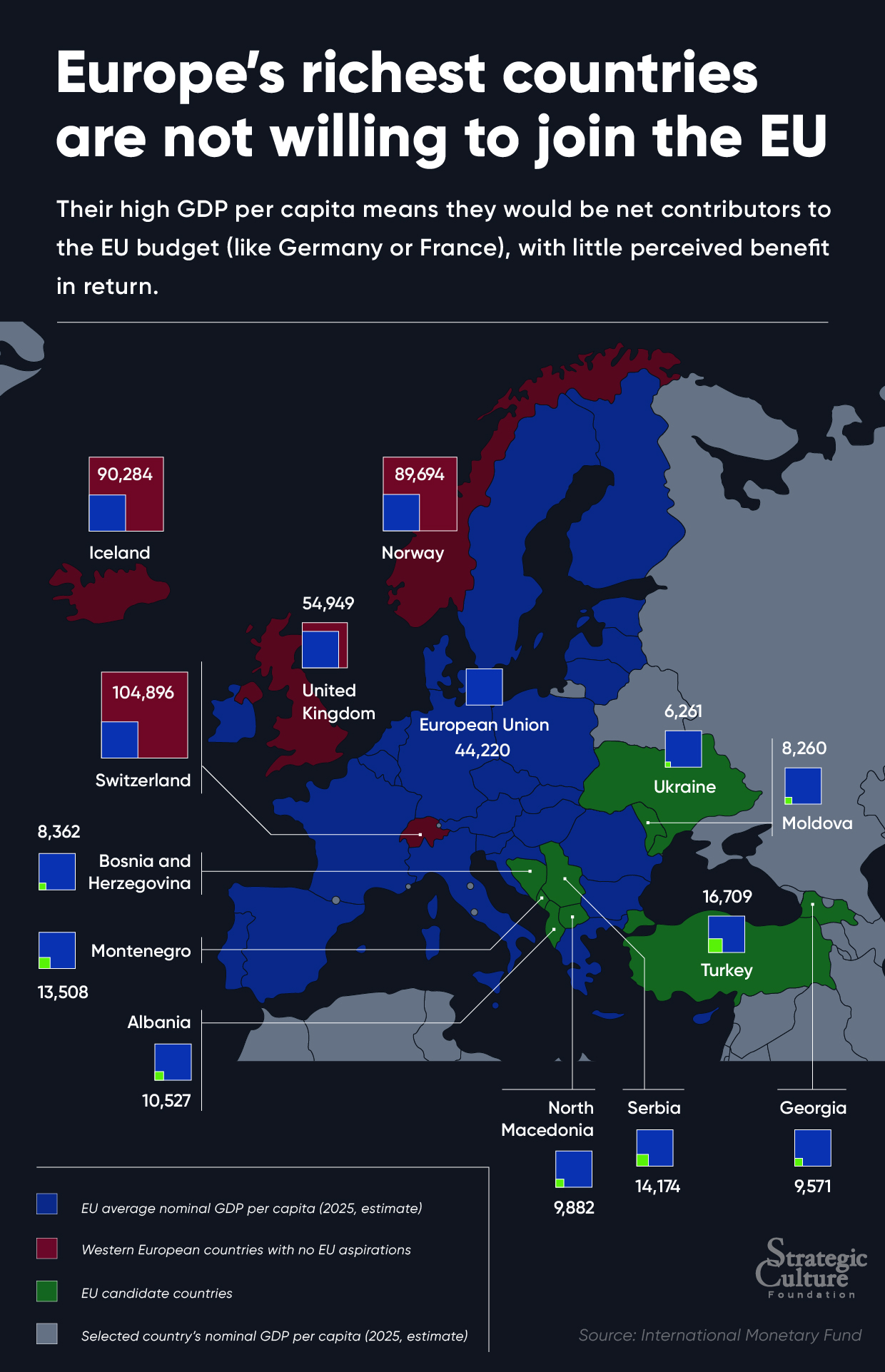
https://strategic-culture.su/news/2025/ ... g-join-eu/
******
Warmongers Get A Win In Romania, A Small Loss in Poland, And A Big Loss In South Korea
Roger Boyd
Jun 05, 2025
In Europe the warmongering elites are having to work harder and harder to stem the tide of opposition to their increasingly risky and costly actions with respect to the Russo-Ukrainian proxy war and the building of the risible “peace through strength”. In Romania after much work they held the line, in Poland they suffered a small setback.
In Asia it is the US elites who are the warmongers, and they tried very hard to create a war between South and North Korea under the pretence of which the progressive and more independent population and their politicians could be cowed under a repeat of the post-WW2 brutal martial law regime. Thankfully they failed, but the evidence of the extreme risks of a regional conflagration that they would take to undermine China and Russia is instructive of their mindset. Taiwan beware!
Romania
The Romanian presidential elections of 2024-2025 provide all the material and more required for a political thriller novel. First, the political establishment operation to split the opposition by helping a fringe figure (Georgescu) backfires as he wins in the first round of the presidential election. Next, the establishment attempts to cover up its own machinations, and screams “Russian interference”, while having to work hard to get the second round cancelled as Georgescu looks certain to win. Then, an utterly unconstitutional multi-month delay while the establishment searches for dirt on the man, but he is just too bloody clean! And assassinations are a little out of fashion after the failed one on Fico, as a botched attempt would make Georgescu unstoppable. So with the new elections looming he has to be blatantly banned for political reasons together with another establishment-unfriendly politician.
But the establishment can’t ban every single opposition candidate, that would be undemocratic! So a Georgescu adjacent politician, George Simion, is allowed to run. But all the powers of the state, the media, and the EU establishment are lined up against Simion in a full court press to get the establishment candidate, Nicosur Dan, elected. And it works, but with only a 53.6% to 46.4% margin of victory and complaints of the many Romanian citizens voting in Moldova being the subject of election fraud; something that Moldova has shown a competitive advantage in.
By hook and by crook, the EU warmongering establishment got the Romanian president they wanted, but the lengths that were required to get that result show the increasingly weak state of EU oligarch hegemony in Europe. The BBC showed the establishment pleasure while repeating utterly debunked anti-Russian propaganda.
Poland
In 2023, the Polish parliamentary elections had thrown out the nationalistic conservatives of the PiS and brought back the EU-loving neoliberals of the Civic Union under the leadership of the ex-head of the European Council (2014-2019) Donald Tusk. The EU establishment could relax, assured that a true believer and oligarch tool was ruling Poland once again. The only fly in the ointment was the president, Andrej Duda, who was in opposition to the parliamentary ruling party, but that could be solved in the 2025 presidential election.
But to the horror of Tusk and the EU elites, the opposition figure of Karol Nawrocki squeezed past the neoliberal EU-loving candidate. Like the PiS, Nawrocki calls for significant government intervention in the economy, combined with cultural conservatism, while also opposing Ukraine’s entry into the EU and NATO. He also opposes Polish entry into the Euro (which will remove Poland’s monetary sovereignty), and any direct Polish intervention in Ukraine. He is still Russia-hating, but also stated that Ukraine should fully accept the crimes of Bandera and the Volyn massacre. Fundamentally aligning with the US, rather than the EU, and following Trump’s less aggressive position with respect to the Russo-Ukraine war. Definitely a loss for the European warmongers, but also a win for the US Empire. And very much a thorn in the side of Tusk, who does not have a big enough majority to overturn a presidential veto. One of the bigger losses will be any hope for climate change action, as Nawrocki is utterly against such things.
South Korea
The greatest geopolitical thriller for a decade or more completely memory-holed and obfuscated by the Western media! A colossal loss in a high stakes poker game played by the US. The US-puppet president of South Korea, Yook Suk Yeol, attempted to start a war with North Korea while carrying out a political coup by declaring marshal law; an attempt to turn South Korea into an unsinkable aircraft carrier in a war with China and quite possibly another Ukraine to create problems for both China and Russia. How dare those damn North Korean commies supply weapons and troops to Russia, the US will show them some consequences!
Using the classic tactic of a war to rally the population “around the flag” and as an excuse to purge the opposition, the president was looking to recreate the pre-democratic conditions of South Korea so that he could simply lock up the opposition and rule as a dictator.
A possible timeline of how Yoon’s coup plans interacted with escalations against North Korea has begun to emerge. Yoon’s tenure in office has been characterized by unbridled aggression against Pyongyang, and a cozy military relationship with Washington and Tokyo that sent tensions soaring throughout Northeast Asia. It is now known that Yoon’s coup plans began in July of 2023.
Upon coming into office in 2022, Yoon adopted a military policy towards North Korea known as the Kill Chain Doctrine, which advocates the use of preemptive strikes in the event of suspected attacks. Over the next two years, the rate and magnitude of joint military exercises with the US exploded; over 200 days of US-ROK war games were held in Korea in 2023, and in August of this year the two countries held their first joint nuclear tabletop exercise to rehearse plans for a nuclear strike on the peninsula. Consequently, inter-Korean relations have entered a historic nadir. In December 2023, North Korea took the unprecedented step of renouncing its policy of peaceful reunification.
In October, North Korea reported a number of drone incursions over its territory. There have also been a number of testimonies that South Korean special forces were to be used in a false flag operation, wearing North Korean uniforms, to assassinate leading South Korean politicians. Also perhaps even killing US soldiers (the US has an occupation force of 28,500 and in wartime the US commander takes control of the South Korean military) and to carry out a gas attack on South Korea (very reminiscent of the Syrian false flag gas attacks). Given that any war between North and South Korea could rapidly escalate into a full out regional conflict that could end up as a replay of the 1950s Korean War, or worse, the level of US risk-taking is astonishing.
But the operation failed, thankfully for us all. Firstly, North Korea remained calm and did not respond and therefore did not provide any cause celebre. In addition, South Korean lawmakers managed to make it into parliament and fight off the special forces long enough to pass a vote annulling marshal law. After that things unravelled rapidly for the coup plotters and a multi-month constitutional crisis replete with political chaos ensued. The end result being the recent presidential election where the opposition leader Lee Jae-myung won; a much more moderate leader who will work to reduce tensions with North Korea and follow a more friendly policy toward China.
The US high stakes gamble failed and the warmongers were foiled. The role of the US and the more damaging details of the coup will be covered up for public consumption, and Yoon and a few others prosecuted; the North Korean, Chinese and Russian intelligence services will know the truth. They will be very happy to deal with the new South Korean president. One that does not want to sacrifice his own people on the alter of US supremacy. While the US will use the tariff war in an attempt to keep the new president in line. The Guardian as per usual, summed up the Western warmongering unhappiness at their loss, labelling the new president as “divisive”; code for not being a US puppet.
For at least the next five years the president of South Korea will not allow his nation to be sacrificed by the US in an attempt to weaken China. This is good news for the Taiwanese population, as this greatly limits US options with respect to triggering a war over Taiwan. There is also little chance of Japan sacrificing itself in such as way, and the ASEAN nations, perhaps excluding the Philippines, will remain strongly neutral in such a conflict.
As I have noted previously, the current US puppet head of the Philippines may be amenable to sacrificing his nation for the right personal incentives. He is the son of the utterly disgraced and colossally corrupt ex-dictator Ferdinand Marcos who was deposed by a general revolt, and was educated in the UK and US partially at the expense of the Office of the US President. The next Philippine presidential election is in 2028, so the US may only have a window of three years for such an option. Sara Duterte, the daughter of the previous non-US puppet president that Marcos had kidnapped and illegally transferred to the Hague for the usual Western show trial, is already the front runner for that 2028 election.
https://rogerboyd.substack.com/p/warmon ... -romania-a
